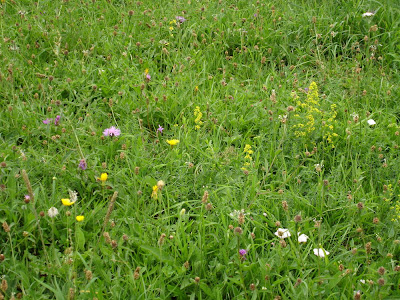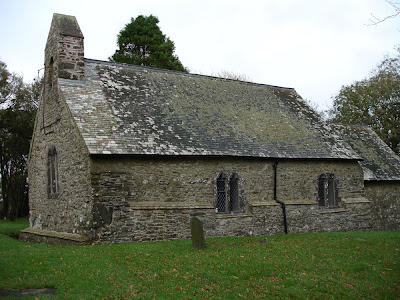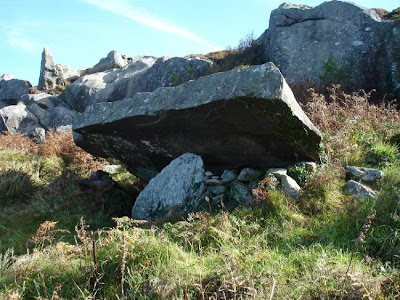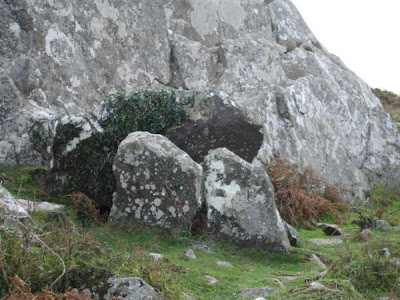Weston Village, for that is what the locals call it, though in truth it should be called Upper Weston as opposed to Lower Weston, which encompasses Chelsea Road, is a village attached to Bath but not quite joining. It is about a 20 minute walk through the park to the centre of Bath, but this green space divides our small space beautifully. So that on walking up from the park, you have to walk along Weston Road, with its elegant large Georgian and Victoria houses, till you reach a curve in the road. Here you are presented with a choice continue down Weston Lane into 'The Dip', the small chasm at the bottom of the hill that once the Locksbrook tumbled over, or you can continue to the right and then left down Weston Park. Here there are even larger victorian houses, set in large gardens with graceful pine and fir trees that reach to the sky.
You will pass the Archery Field on your right and your eye will be led to the fields on the Lansdown, at this time of year the trees are autumnal and their rounded forms seem to dance down the hill. This field, belongs to the village, here dogwalkers perambulate, there is a football pitch, children hurry through from the estate down to schools in the town. It was given by a local benefactor in the 19th century, and because it is on a slope, the ground has had to be built up and levelled, the archery bit is a small square plot at the top by the horses field.
Shopping this morning took me to the other end of the village to the bakers, the vicar's wife was untying her small dog from a lampost, and I was to follow her as she went from shop to shop.
The bakers is a small local one, the price of bread has gone up sharply to reflect the increase in the price of wheat, but it does a good trade with locals walking down to get their bread, and workmen buying their filled rolls and coffee. It belongs in a small row of shops that sit beneath some flats, and as you walk along the pavement there are flowers laid by a pillar to remember a young mother, who accidentally fell and was sadly killed from one of the flats a year or so back.
Next to the chemist, and Charlie the King Charles Spaniel is again tied up outside, always busy this little chemist with people bringing in there prescriptions and then they will wait while the pharmicist makes them up.
Across the road past the pub, the other pub has been turned into an Indian restaurant, and then to the greengrocers. Charlie is once again outside, and I potter amongst the outside stuff, to see what our local vegetable grower has been growing, last week gigantic heads of green celery, today great yellow pumpkins and purple cauliflower. Inside and the gossip is in full flow,the vicar's wife remembers when we got to know each other, which was at the time of the foot and mouth epidemic, and all dogwalkers were confined to the area around Bath. So we would walk our dogs round the Archery Field. We talk of Margery and her new 'rescue' labrador, Margery is a very old lady but indomitable, she lives in one of the cottages on my lane and paints dogs and leads a throughly happy life gossiping. Even in the shop there is a note of tragedy for someone mentions a motorbike accident on Lansdown Lane in the slippery conditions this morning, for the greengrocer's wife lost her son through a motorbike accident down the lane in The Dip. I remember a few years back walking down the High Street and seeing all the shops shut, and then the hearse car passing by very slowly.
Above the High Street, a small back lane runs, Georgian houses, the path, and then small plots of garden, follow the lane up to the church and you enter the graveyard with its elegant tombs and graceful yews. Take the path through the graves and you are now in Church Road, a steep little cul-de-sac of a road that leads to the fields. This is where I first lived when I came to Weston, in one of the small terraced houses opposite the church. The deaf milkman still lives here but the old occupants have gone, old Mrs Gregory who grieved for her 60 year old son who had passed away before her. Bill the gravedigger, who told me terrible tales of how the hair and nails grew on the dead bodies, and the maggots that appeared from the stomachs of the dead, all nonsense I'm sure.
Village life still meshes together in Weston, even though there is a large hospital sprawling on its doorstep. But even here, the buildings of the hospital have spaced themselves out and there are green spaces and trees, blending houses into the countryside with quiet ease. When I first came here, there was a mental unit attached to the hospital, and I would meet all manner of weird and wonderful people as I walked to the shop. Some chattering to themselves, others swearing, some falling into conversation, one I remember dancing about in front of someone's car, reckoning that he had been knocked over by him. People in Weston are used to all this, once I saw a perfectly respectable person sitting on the kerbstone comforting someone who was in flood of tears, or the till girl in our local supermarket explaining patiently over and over again to the girl confused and upset by her till receipt. The tramp who strolled out with a whiskey bottle in his pocket and one under his mac past the bemused people at the till, did'nt end up with the police, just the young store manager following him and relieving him outside and everyone laughing as he came back triumphant and swearing with the two bottles.

.jpg)






.jpg)



















